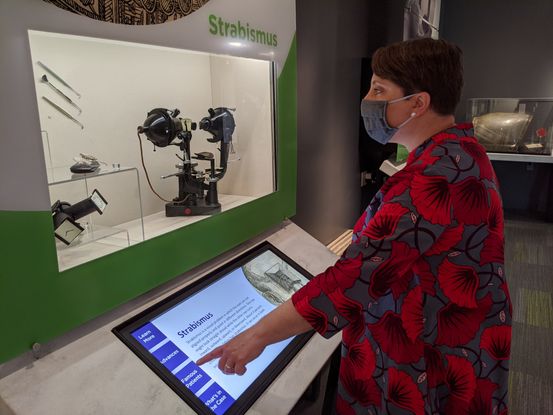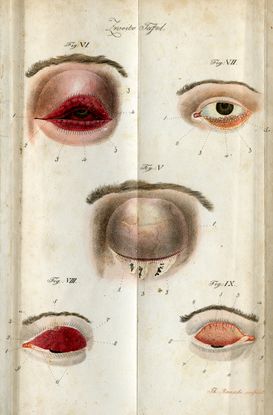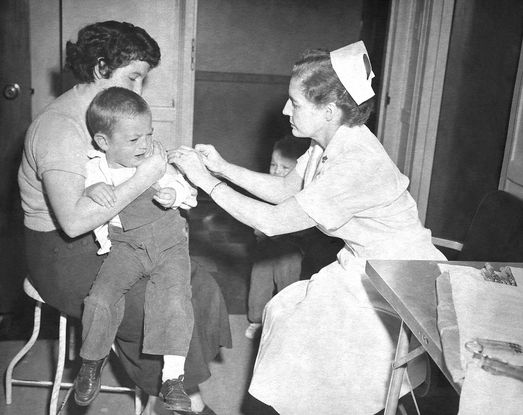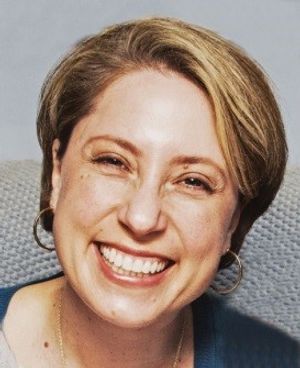Aug 28, 2020
Author: Jenny Benjamin, Director, Truhlsen - Marmor Museum of the Eye® & The Stanley M. Truhlsen, MD Director of Ophthalmic Heritage
Hello and welcome to the virtual Truhlsen-Marmor Museum of the Eye®! My name is Jenny Benjamin and I am the Director of the museum. This is our first of many blog posts which will explore the incredible world of ophthalmology. Guest authors and museum staff will fill this space as we explore the museum’s collections and exhibits together; it is our goal to start conversations with those who are curious about the wonders of sight and the history of ophthalmic medicine.

The COVID-19 pandemic has been hard on museums across the country. I am currently unable to invite you to visit our artifacts and new galleries in San Francisco, and instead, have been spending my time looking at my community and wondering how best to make sense of the months we have been sheltering and waiting for a cure or treatment to this infectious disease. One thing I have noticed is that many folks are looking to the past, particularly to the 1918 flu pandemic, for comfort and insight on how to ride out this one. And being someone who thinks a lot about eye medicine, I thought, why limit our insight to the flu?
Our next on-line exhibit will be “Back to the Future: Responses to Global Pandemic” – an exploration of the parallels between COVID-19 and trachoma, an ophthalmic pandemic disease with outbreaks in the 19th and 20th centuries. Trachoma has fascinating parallels to our current situation having triggered travel bans, changed immigration policies, built hospital infrastructure, and even a national educational campaign to “flatten the curve.”

An illustration of Trachoma, one of the oldest known eye diseases. Caused by the bacteria Chlamydia trachomatis, infection often happens in childhood. Today, trachoma is the world’s leading cause of infectious blindness.
As we work to get “Back to the Future” to you, I’ll point anyone interested in the subject to check out our earlier exhibit, “Contagion”. This exhibit is a broader discussion of contagious disease, the difference between viruses and bacterial infections, and fascinating characters in ophthalmic history. These stories inspire me with hope for the future because if people over 150 years ago could understand the nature of disease and conquer it, we can too.

Child being vaccinated for smallpox, 1960. Courtesy of the Centers for Disease Control and Prevention.
I hope in the coming months you will explore the museum’s website and continually check back with us to learn more about the history of ophthalmology. I personally look forward to sharing news about the museum’s new acquisitions, curiosities from the vault, and the interesting stories that cross my desk.
More About Jenny Benjamin; Director, Truhlsen - Marmor Museum of the Eye®
 At parties (remember those?) I used to joke that I had the weirdest job in the room. Not only do I work in a museum, but I work in an eyeball museum. The question I am most often asked is, “how did you end up doing that?” Well, here’s my story.
At parties (remember those?) I used to joke that I had the weirdest job in the room. Not only do I work in a museum, but I work in an eyeball museum. The question I am most often asked is, “how did you end up doing that?” Well, here’s my story.
After graduate school at The George Washington University in Washington DC, I did what you’d expect and searched for a job in the DC metro area. Soon thereafter, I got an offer from the American Academy of Otolaryngology – Head and Neck Surgery in nearby Alexandria, Virginia. At this point I can hear you thinking, “the what, now?” The American Academy of Otolaryngology is the national association of ear, nose, and throat physicians. And they had a museum. I learned how to say “otolaryngology” and spell it correctly (which is impressive in itself). I also learned the fascinating history of eye, ear, nose and throat medicine (EENT) in the United States. EENT was often practiced together in the US and this job was actually my introduction to eyes.
In 2001 I left the otolaryngologists and joined the American Academy of Ophthalmology to run their museum, rare book library and archive. It was a dream come true. Not only did I get to continue my work in the history of medicine field, but I also got to return to my hometown, San Francisco, with my new husband in tow. Over the past 19 years, I have felt privileged to help the Museum of the Eye® grow and evolve into a public venue that can fascinate the public and physicians in equal measure.